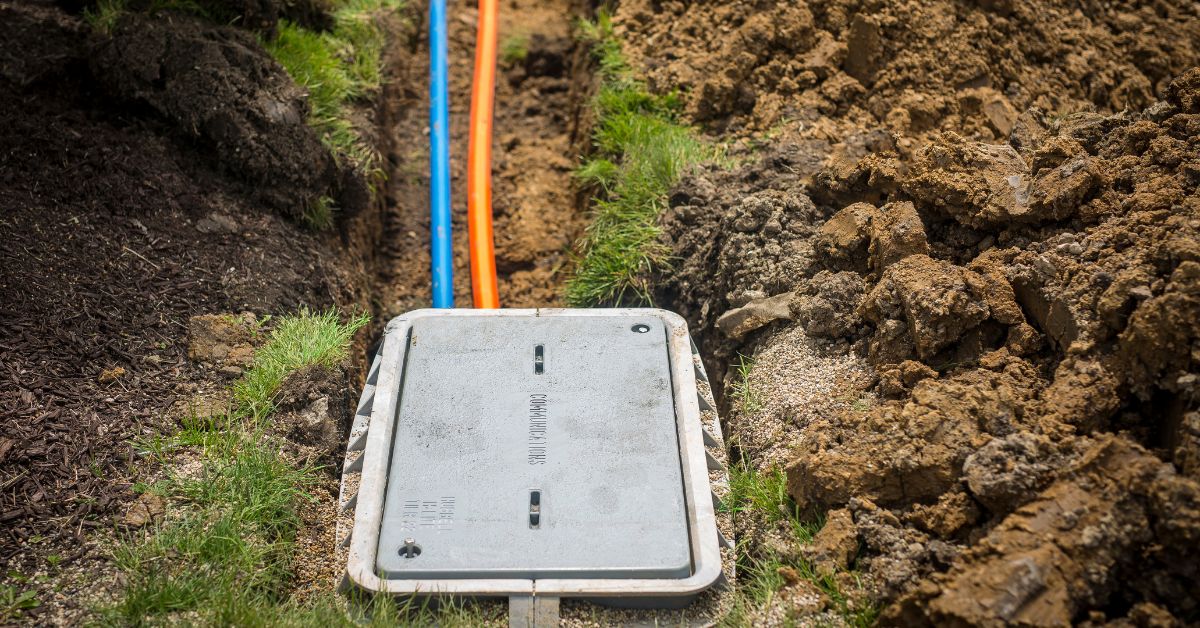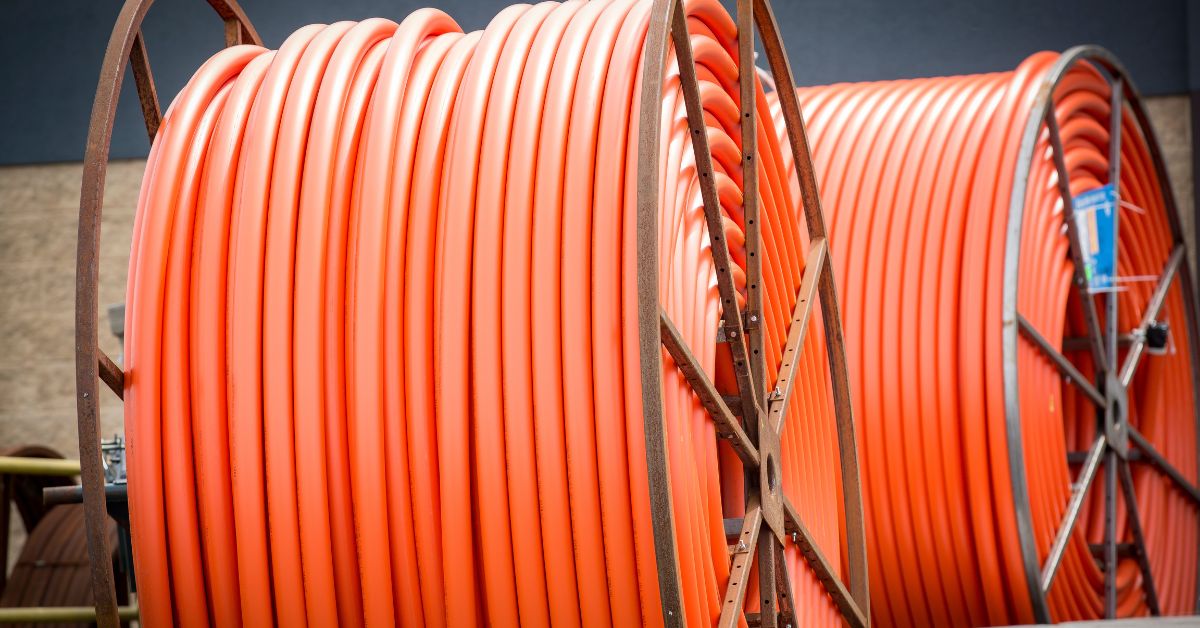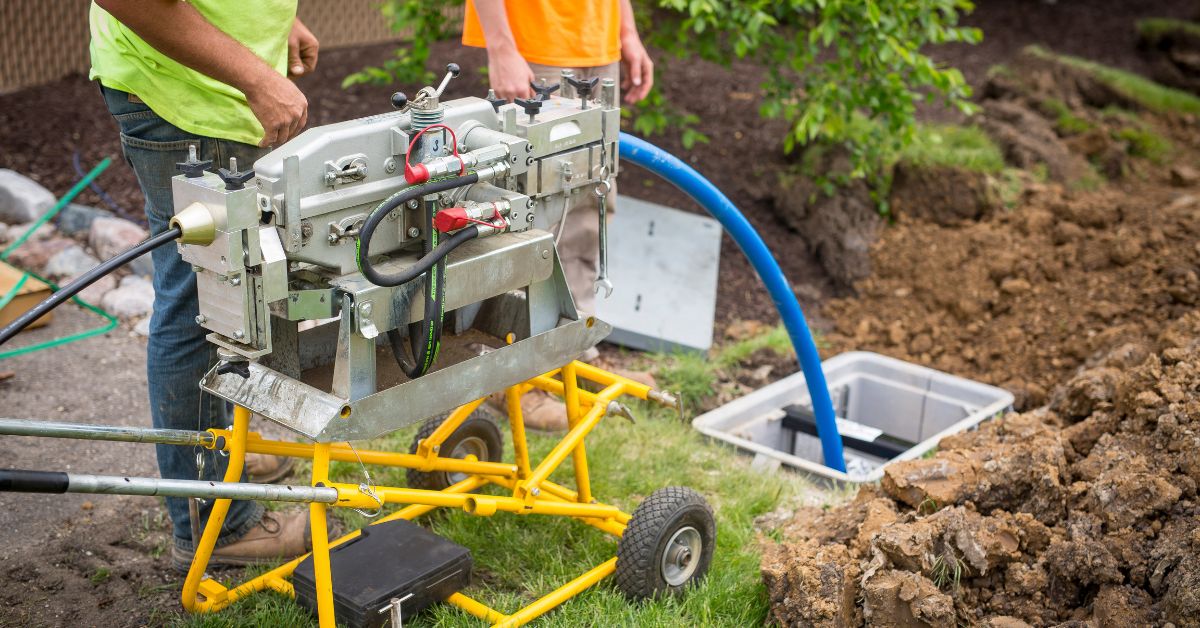No products in the cart.
Direct Burial vs. Aerial Drop Cable for Rural Fiber Builds
Home Direct Burial vs. Aerial Drop Cable for Rural Fiber Builds
- Home
- Resource Hub
- Millennium Blog
- Direct Burial vs. Aerial Drop Cable for Rural Fiber Builds

Rural broadband deployment comes with unique challenges, and choosing the right fiber optic drop cable configuration for last-mile connectivity is crucial. ISPs, contractors, and installers must decide between direct burial and aerial drop cables, as this choice impacts project timelines, costs, and network reliability. This guide provides a comparison between direct burial vs. aerial drop cable for rural fiber builds, offering insights to help optimize infrastructure investments and deliver reliable service to underserved communities.
What is Direct Burial Cable?
Direct burial cable represents a fiber optic solution specifically engineered for underground installation without additional protective conduit. These cables feature robust construction with moisture-resistant jackets, reinforced strength members, and enhanced protection against environmental factors commonly encountered in subsurface installations.
Advantages of Direct Burial Cable
- Enhanced Physical Protection: Direct burial cables offer superior protection against external damage from weather events, vehicle strikes, and vandalism. The underground placement shields the fiber infrastructure from ice storms, high winds, and other environmental hazards that frequently affect aerial installations in rural areas.
- Aesthetic Preservation: Underground cable installations maintain the visual integrity of rural landscapes without introducing overhead infrastructure. This characteristic proves particularly valuable in areas where property owners prioritize scenic preservation or where local regulations restrict overhead utility installations.
- Reduced Maintenance Requirements: Once properly installed, direct burial systems typically require minimal ongoing maintenance compared to aerial configurations. The absence of exposure to weather-related stress factors and physical impacts reduces the frequency of service interruptions and repair requirements.
- Long-term Durability: Quality direct burial cables demonstrate exceptional longevity when installed according to manufacturer specifications. The controlled underground environment protects against UV degradation, temperature fluctuations, and mechanical stress that can compromise aerial installations over time.
Disadvantages of Direct Burial Cable
- Higher Installation Costs: Direct burial deployments require significant excavation work, increasing both labor costs and project timelines. Trenching operations, particularly in challenging terrain common to rural areas, can substantially impact project budgets.
- Complex Troubleshooting: Identifying and accessing cable faults in underground installations presents considerable challenges. Fault location requires specialized equipment, and repairs often necessitate excavation, extending service restoration times.
- Installation Complexity: Direct burial projects must account for existing underground utilities, soil conditions, and environmental regulations. Coordination with utility location services and obtaining necessary permits can extend project schedules significantly.
- Limited Accessibility: Future network modifications or upgrades require excavation to access buried cables. This limitation can complicate network expansion efforts and increase long-term operational costs.

What is Aerial Drop Cable?
Aerial drop cable utilizes overhead installation methods, typically attaching to existing utility poles or dedicated support structures. These cables incorporate design features optimized for above-ground deployment, including enhanced UV resistance, ice loading capabilities, and specialized messenger wire configurations.
Advantages of Aerial Drop Cable
- Rapid Installation: Aerial installations typically proceed faster than underground alternatives, reducing labor costs and project timelines. Skilled technicians can complete aerial drop connections efficiently using standard utility installation practices.
- Simplified Troubleshooting: Visual inspection capabilities and direct access to aerial cables streamline fault identification and repair processes. Maintenance crews can quickly locate and address service issues without excavation requirements.
- Cost-Effective Deployment: Lower installation costs make aerial solutions attractive for budget-constrained rural broadband projects. The elimination of excavation work and associated restoration activities reduces overall project expenses.
- Installation Flexibility: Aerial systems accommodate route modifications and network expansions with relative ease. Adding new service drops or rerouting cables requires minimal infrastructure disruption compared to underground alternatives.
Disadvantages of Aerial Drop Cable
- Environmental Vulnerability: Aerial installations face continuous exposure to weather conditions, including ice loading, wind stress, and UV radiation. These factors can accelerate cable aging and increase failure rates in harsh rural environments.
- Maintenance Requirements: Regular inspection and maintenance activities are necessary to ensure aerial system reliability. Tree trimming, hardware replacement, and weather damage repairs contribute to ongoing operational costs.
- Aesthetic Impact: Overhead cable installations can detract from rural landscape aesthetics and may face opposition from property owners or local planning authorities concerned with visual impact.
- Physical Vulnerability: Aerial cables remain susceptible to damage from falling trees, vehicle strikes, and intentional vandalism. These risks can result in service outages and emergency repair requirements.
Factors to Consider When Choosing
Selecting between direct burial and aerial drop cable requires a comprehensive evaluation of multiple project-specific factors that influence both immediate implementation and long-term operational success.
Terrain and Soil Conditions
Rocky terrain, high water tables, or unstable soil conditions can significantly complicate direct burial installations. Conversely, areas with challenging aerial access or limited pole infrastructure may favor underground deployment despite soil challenges.
Existing Infrastructure
The presence of established utility pole networks often makes aerial installation more economical. However, underground utility congestion or restricted pole attachment agreements may necessitate direct burial solutions.
Environmental Considerations
Regions experiencing frequent severe weather events may benefit from underground cable protection. Areas with stable weather patterns might favor cost-effective aerial installations.
Regulatory Requirements
Local building codes, environmental regulations, and utility commission standards can influence or mandate specific installation methods. Urban interface areas often require underground installations for aesthetic compliance.
Budget Constraints
Available project funding directly impacts feasible installation methods. While aerial solutions offer lower initial costs, direct burial systems may provide superior long-term value through reduced maintenance requirements.
Service Area Characteristics
Rural areas with scattered customer locations may favor aerial installations for flexibility. On the other hand, dense rural developments might justify underground infrastructure investments.
Best Practices for Installation
When deploying rural fiber networks, selecting the optimal installation method is critical to ensuring long-term reliability and efficiency. Adhering to best practices for these methods helps maximize performance while minimizing disruptions and future costs.
Direct Burial Cable Installation
- Proper Depth Requirements: Install cables at minimum depths specified by local codes, typically 36 inches for direct burial applications. Increased depth provides additional protection against accidental damage from landscaping or construction activities.
- Warning Tape Installation: Place warning tape 12 inches above buried cables to alert future excavation activities. Use bright-colored, detectable tape with appropriate warning text for fiber optic installations.
- Soil Conditioning: Remove rocks, debris, and sharp objects from trenches before cable placement. Use sand bedding or specialized backfill materials to provide uniform support and prevent cable damage.
- Route Documentation: Maintain detailed records of cable routes, depths, and splice locations. GPS coordinates and as-built drawings facilitate future maintenance and expansion activities.
Aerial Drop Cable Installation
- Proper Sag Calculation: Calculate appropriate cable sag to accommodate thermal expansion, ice loading, and wind stress without exceeding manufacturer specifications. Improper sag can lead to excessive tension or ground clearance violations.
- Hardware Selection: Use corrosion-resistant hardware rated for local environmental conditions. Stainless steel or galvanized components provide enhanced longevity in rural environments with varying weather exposure.
- Clearance Requirements: Maintain required clearances from other utilities, structures, and roadways according to National Electrical Safety Code standards. Document clearance measurements for regulatory compliance verification.
- Strain Relief: Install appropriate strain relief devices at cable termination points to prevent stress concentration that can damage fiber connections over time.

Making the Right Choice for Your Rural Deployment
The decision between direct burial vs. aerial drop cable installations requires careful analysis of project-specific requirements, environmental conditions, and long-term operational objectives. Direct burial solutions excel in environments requiring maximum protection and aesthetic preservation, while aerial installations offer cost-effective deployment for budget-conscious projects with suitable infrastructure support.
For comprehensive fiber optic drop cable solutions designed specifically for rural broadband deployment, explore Millennium Broadband Solutions’ extensive inventory of direct burial and aerial drop cables. Our technical experts can help you select the optimal cable configurations for your specific project requirements, ensuring reliable connectivity for underserved rural communities.
